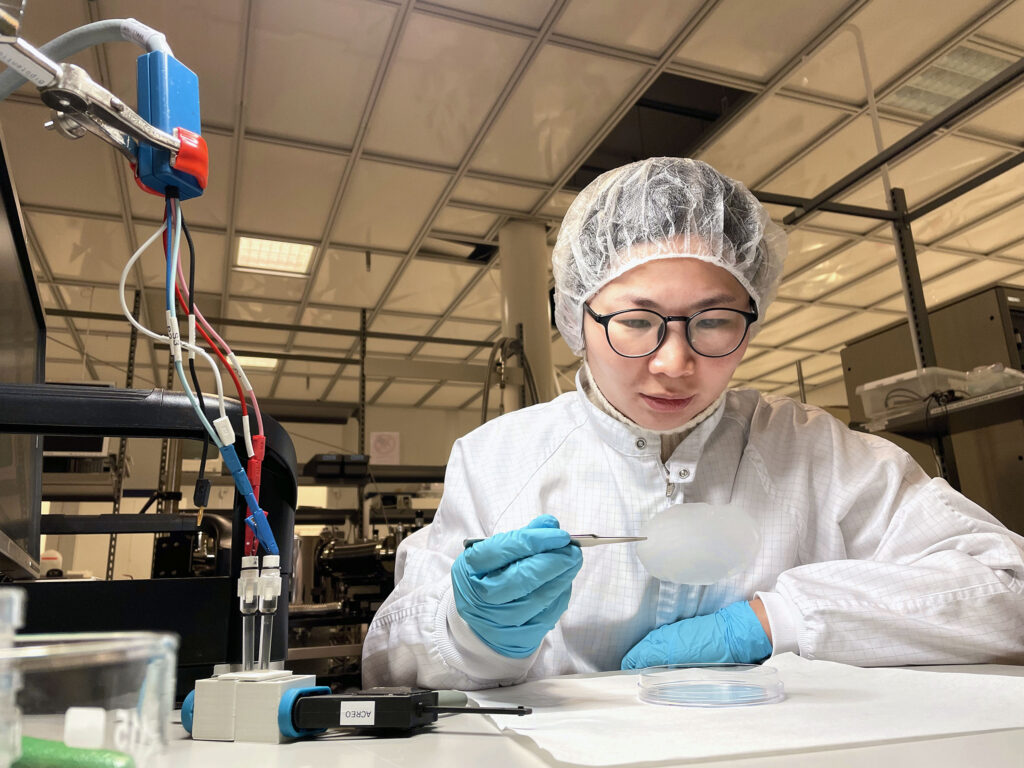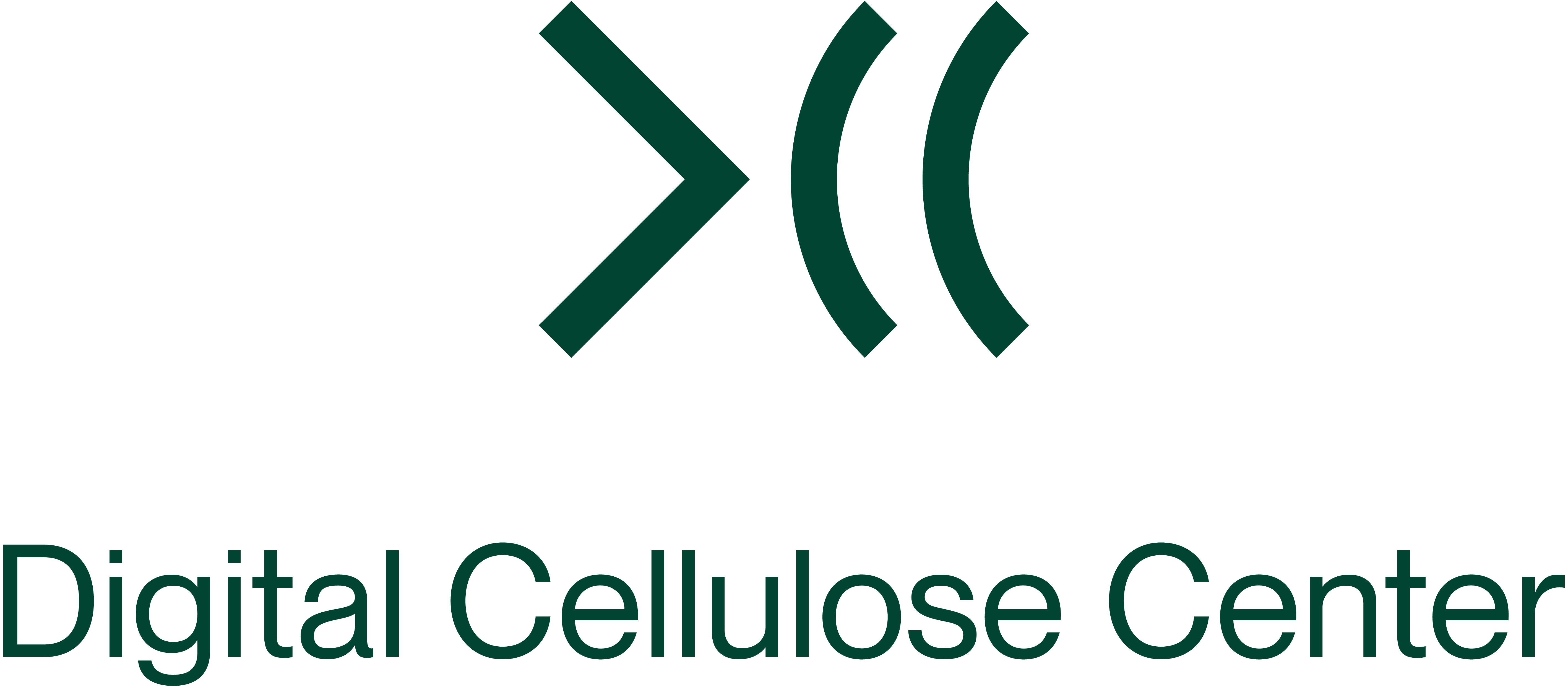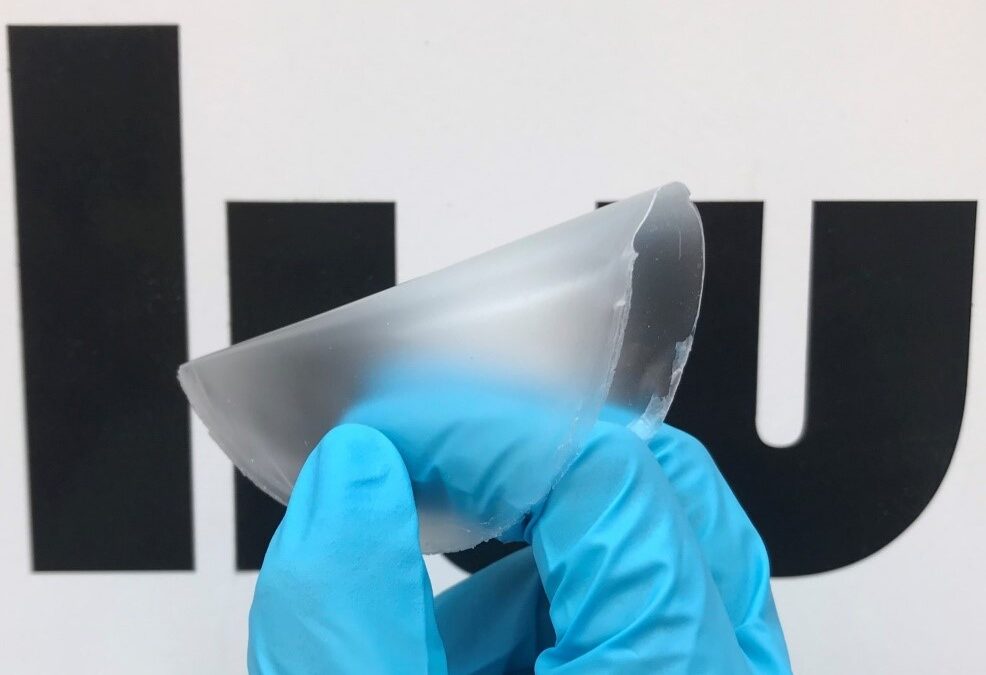Researchers within the Digital Cellulose Center have found a new way to create clean energy by developing cost-effective and recyclable nanocellulose membranes for osmotic energy generators. The developed proof-of-concept osmotic power generators based on the new membranes show high power density and long-term working stability.
Hongli Yang is a doctoral student at the Digital Cellulose Center. Her latest research is within osmotic energy – a renewable energy form generated from salinity gradients. She has developed a cross-linked nanocellulose membrane made of cellulose nanofibrils intertwined to make it excellent at selectively transporting ions and generating electricity. These cost-effective and sustainable membranes show high power density and long-term working stability.

Affordable, clean energy with osmotic energy harvesting
Osmotic energy is a clean and renewable form of energy created by the difference in salt concentration between seawater and freshwater. A membrane separates the two types of water, with the saltier water on one side and the fresher water on the other side. In water, salt dissociates into ions with different electrical charge, and the membrane preferentially transport one type of ions from the high concentration side toward the low concentration side to generate electricity. This process is known as reverse electrodialysis (RED) and is a reliable technique for achieving osmotic energy harvesting.
Ion-exchange membranes (IEMs) are generally utilized as a central component in the RED system. However, the traditional IEMs have some limitations, such as high membrane resistance and low energy efficiency, which restrict the final power density. They are also commonly fabricated from a high-cost synthetic polymer, which is neither renewable nor biodegradable.
Nanofluidic systems can boost the osmotic power output
Nanocellulose is considered a sustainable bio-polymer because of its natural abundance and recyclability, and it is also a cost-effective material. Due to its unique nanofibrillar morphology, nanocellulose can be interwoven to form tunable and well-defined nanopores, which provide the nanochannels and enable the membrane as a nanofluidic system. In a nanofluidic system, the ion selectivity is enhanced due to the surface charges and nanochannels’ size being comparable to the Debye screening length, boosting the osmotic power output. During the research, a cross-linked nanocellulose membrane with optimal ion selectivity was selected to generate osmotic energy. The results showed that osmotic power generators based on the cross-linked nanocellulose membranes exhibit high power density and long-term working stability.
In the future, anionic exchange nanocellulose membranes can be explored, which combine with the cross-linked nanocellulose membranes (cationic exchange membranes) to develop membrane stacks for upscaling osmotic energy harvesting. It opens a new avenue for developing renewable osmotic energy harvesting using low-cost and sustainable nanocellulose-based materials.
How a nanocellulose membrane works in an osmotic power generator
The cross-linked nanocellulose membrane as an ion-selective membrane is negatively charged. As the membrane is put between seawater and river water, the membrane allows preferential transport of cations, which generates osmotic current and osmotic potential to realize the osmotic energy harvesting. This clean and renewable energy source is called “blue energy,” as it comes from the world’s oceans. The new material is also very strong and can last a long time, making it a good choice for this type of energy generation. The amount of electricity generated depends on the structure and charge density of the membrane used, which is important to keep in mind when comparing different materials for generating osmotic energy.
The benefits of using osmotic energy include being a renewable and sustainable energy source, as it does not produce harmful emissions or waste products. Additionally, it is a cost-effective alternative to traditional power sources, as it does not require any fuel or raw materials. Osmotic energy has the potential to be used in a variety of applications, such as generating electricity in power plants, desalinating seawater, and more.
Read the full article Cross-Linked Nanocellulose Membranes for Nanofluidic Osmotic Energy Harvesting, published in ACS Applied Energy Materials.
The research is based on Hongli Yang’s previous findings on cellulose-based membranes.
The research within the Digital Cellulose Center is conducted by academic and industry partners, as well as Ph.D. students. The Ph.D. students affiliated with the center are involved in many of the research projects to further generate new knowledge within the field of digital cellulose.
Hongli Yang, Ph.D. student at Laboratory of Organic Electronics (LOE), Linköping University. Supervisors: Associate Professor Isak Engquist, Professor Magnus Berggren and Dr. Viktor Gueskine.

